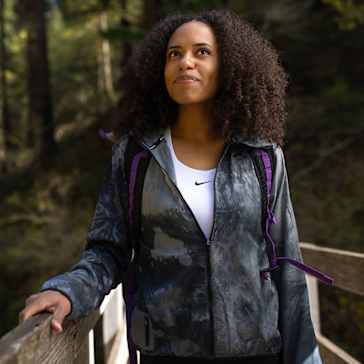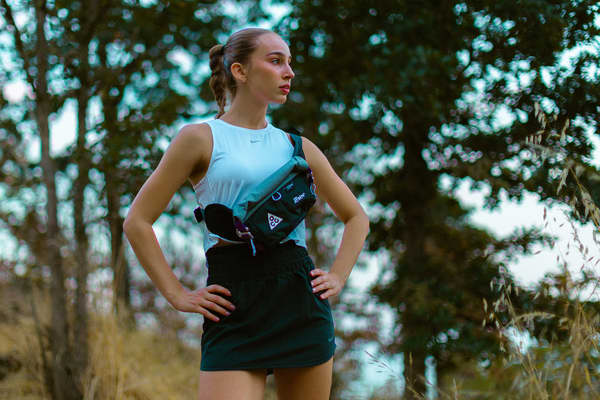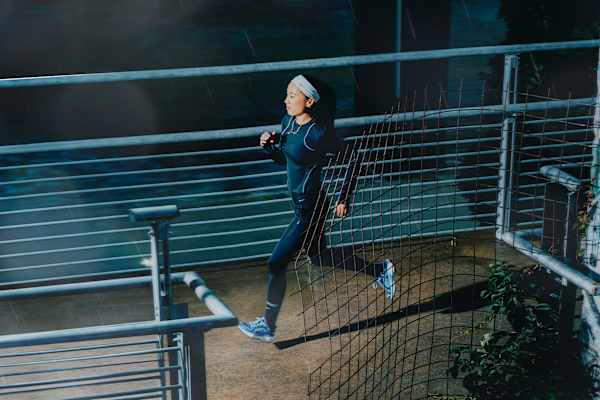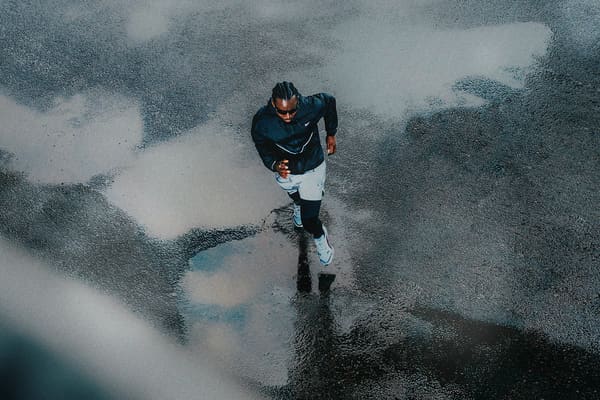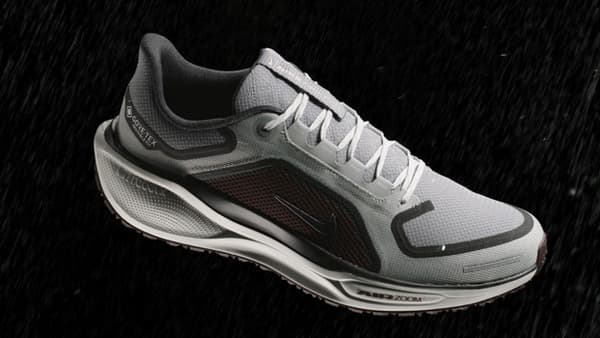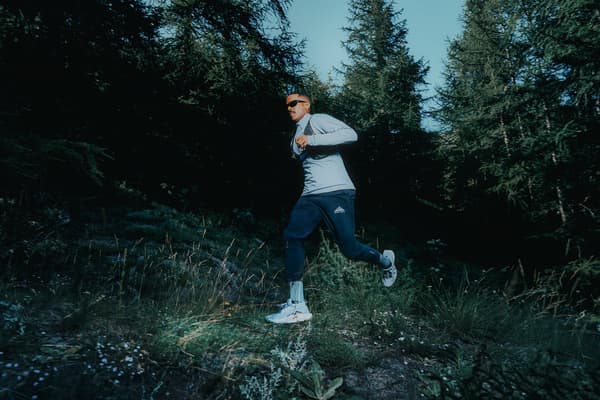What to bring on a hike
Buying guide
With this handy hiking gear checklist, you'll be prepared for whatever you may encounter on your trek.
This is a modal window.
Did you know that hiking, an increasingly popular activity, may have even more health benefits than walking? Hiking typically burns more calories and can help boost your mental health, with one study finding that spending just a short time in nature can help you feel happier and less stressed.
When preparing for a walk, you probably put on your comfy workout clothes, lace up your favourite pair of sneakers, grab a bottle of water, turn on your favourite tunes and head out the door. But if you're spending a day hiking, which typically takes longer and is more physically challenging than walking, your prep gets a bit more complicated.
That's why we've put together the ultimate day hiking checklist with some guidance from Nike Wellness Collective Yoga Instructor, Xochilt Hoover. Read on to learn her list of hiking essentials and product recommendations to ensure you bring the appropriate hiking gear on your next excursion.
1. Layered clothing
The trickiest thing to decide before embarking on a hike is what to wear. While your clothing must-haves may depend on the specific location, time of year and weather conditions you'll face, a general rule is to dress in layers. "Layering is incredibly important on a hike since you often experience different temperatures throughout the hike", Hoover says.
She lists a long-sleeved UV-repellent top as a must and, depending on the temperature, says she usually brings a lightweight jacket or, for colder weather, a down jacket. "The ACG 'Rope de Dope' jacket is one of my faves to wear on hikes that are cooler or need layering", she says.
Hoover's preferred tops for hiking include Dri-FIT T-shirts and long-sleeved shirts for their moisture-wicking fabric that helps you stay dry and comfortable. Her picks for bottoms? Nike's Zenvy and Universa with pockets for their stretchy, comfortable fabric. "I also like the ACG hiking trousers for colder temperatures", she adds.
2. Appropriate footwear
According to Hoover, the appropriate hiking footwear depends on your body, the length of the hike and the conditions you'll encounter. "For shorter hikes, I wear the ACG Mowabb", she says. "Going on longer hikes can be tough on the feet, so I often look for a more lightweight option for a boot. I have pretty weak ankles, so I need a good shoe that gives solid ankle coverage as well as a thicker sole that can withstand rocks and rough terrain".
Both the Zegama and the Wildhorse trail-running shoes are designed to provide stability and cushioned responsiveness, helping you navigate the ups and downs of uncompromising terrain.
One final footwear feature to bear in mind: waterproof or GORE-TEX shoes for encountering slick surfaces. Check out the Pegasus Trail GORE-TEX or the Juniper Trail GORE-TEX.
3. Rain jacket
A rain jacket will help keep you and your hiking accessories dry. The Nike Trail Women's Repel Running Jacket does just that with its durable, water-repellent fabric—plus, it's packable!
4. Water bottle
You need to stay hydrated on any hike (or walk, for that matter). Hoover recommends a 936ml (or larger) stainless steel water bottle, such as the Nike Recharge Stainless Steel Chug Bottle, which is vacuum-insulated to ensure cold drinks stay cold and hot drinks stay hot.
5. Snacks
Along with water, food is a must. Bring plenty of snacks. Depending on the length of your day hike, you may want to pack lunch as well, Hoover says. Opt for non-perishable foods that are rich in nutrients and easy to stash in your backpack. Trail mix, nuts, nut-based bars, seeds, energy bars, granola or granola bars, and dried or freeze-dried fruits and vegetables all make great snacks. Fresh fruit, such as apples, oranges and bananas, is another good option. For lunch, ready-made tuna salad pouches or whole-grain bagels or tortillas are good choices. Perishable foods, such as sandwiches, are also fine to pack, as long as you keep them cold.
7. Sun cream
Along with a hat that offers sun protection, don't forget sun cream. Remember to wear sun cream both on sunny and overcast days to avoid a painful sunburn and help prevent skin cancer and premature skin ageing. Also, protect your eyes with a pair of stylish and protective sunglasses. Polarised lenses are especially helpful when hiking in a snowy environment to block the snow's glare.
8. Chapstick or lip balm
When preparing for a hike, remember to bring lip balm to keep your lips hydrated and protected from the sun (if your lip balm contains SPF). While a small and simple item to throw in your backpack, it's often the little things that are hardest to remember.
9. Hand sanitiser
Another small item that's essential for a day hike (or any other day)? Hand sanitiser. Protect against germs by stocking up at home and always having one on hand for your next outdoor adventure.
10. Tripod
While many hikers enjoy hiking for the act itself, for others the best part is the end goal. Reaching the top of a mountain and witnessing that view feels like an incredible accomplishment. So, give yourself a pat on the back and capture the Instagrammable moment with a photo. As Hoover says: a tripod will come in handy here!
11. Hiking pole
If you're embarking on a hike through rocky terrain, a hiking pole can provide support and stability. The type of pole you need depends on your height and the terrain you can expect.
12. Torch or headlight
Hiking later in the day or in the evening? Bring a torch or headlight if you know it will get dark. Bright idea.
13. First-aid kit
Accidents happen, but when you're out in the wilderness, it's critical to be prepared when an emergency arises. Your typical kit includes adhesive bandages in a variety of sizes, as well as gauze pads, towelettes, tape, tweezers, scissors, an emergency blanket and more.
14. Roomy backpack
Lastly, you need a backpack to carry all of this stuff! Hoover recommends backpacks with plenty of storage. "Side pockets are useful for a water bottle or hiking poles if they fit", she says. "I really enjoy backpacks with lots of compartments, since you're typically bringing a lot of little random things on a hike and it can be nice to put keys and phone stored away in a zipped-up pocket".
Additionally, Hoover prefers backpacks that offer support. "It's helpful to have a backpack with lower back support and one that clasps at the waist as well as over the breast bone", she says.
Hoover recommends the ACG Aysén for longer hikes. Its durable yet flexible Dyneema® material runs through the roll top of the daypack, so it stays in one piece even after extensive use. The daypack also features a wealth of expandable internal storage and a magnetic button closure.
Finally, she says, if you're hiking in a region that experiences a lot of rain, it's a good idea to consider a waterproof backpack.

Of course, you can tailor what you bring on a hike to your specific needs. But, with this simple hiking checklist, you can spend less time thinking about your packing list and more time exploring.
Words by Erica Brooke Gordon
